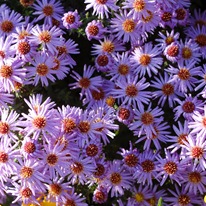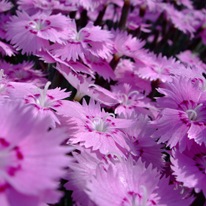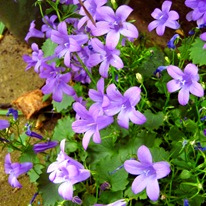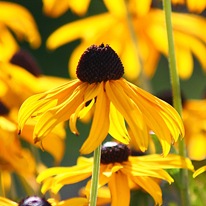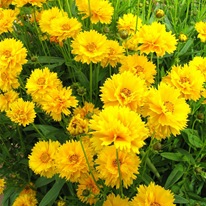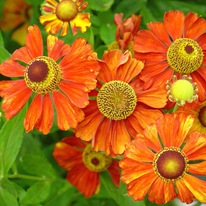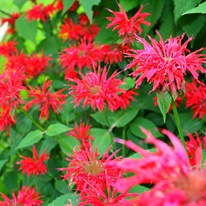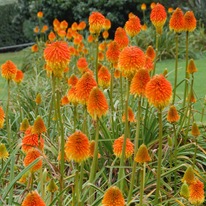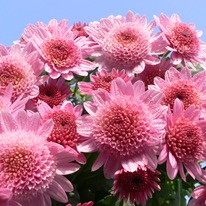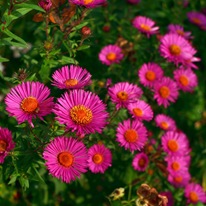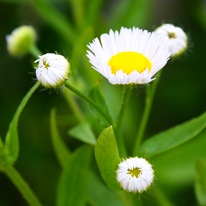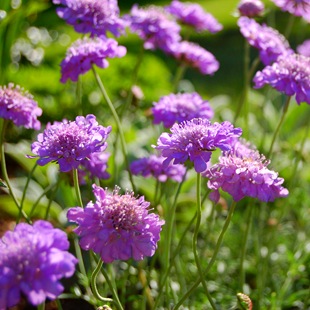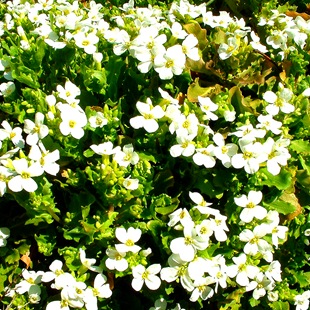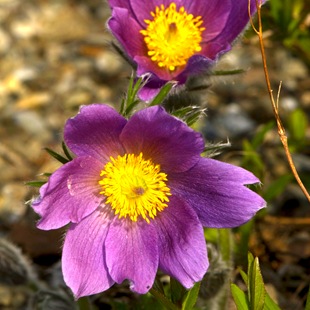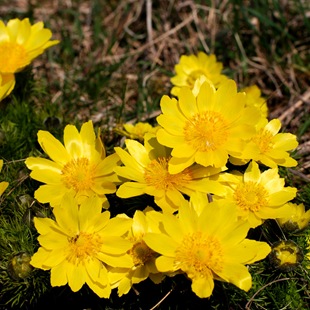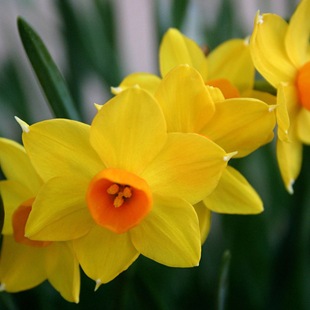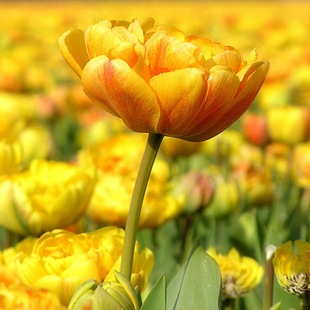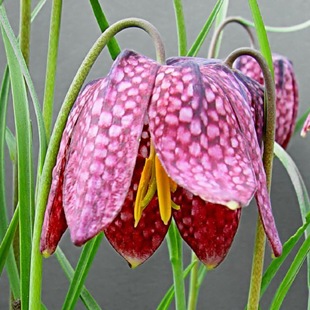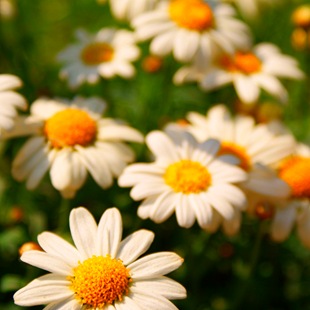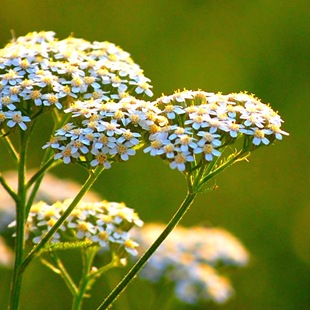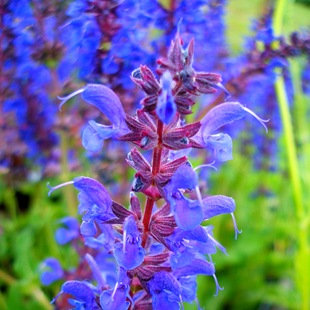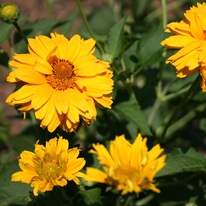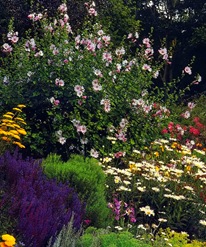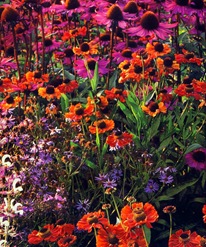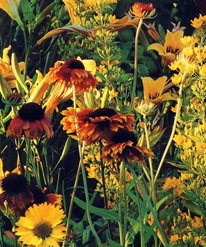July has arrived, and in my area, in the south of Russia, a truly hot season has begun, and in literally. The temperature in the sun goes well beyond forty, and the soil sometimes warms up to sixty degrees, plus there is no precipitation for a long time. Not all plants can withstand such inhuman conditions. Therefore, the selection of colors for sunny flower beds and lawns have to be made taking into account local characteristics. It’s these types of heat- and drought-resistant plants that I want to talk about today. Well, and also about how to help flowers survive such a difficult time for them.
I'll start with how we can alleviate the plight of our green pets.
- Even when planting plants, it is worth taking care of the soil structure. Soil containing a sufficient amount of compost retains moisture better.
- When planting, you should leave enough distance between plants so that each one has enough moisture and nutrients.
- During the growing season, weeds should be removed in a timely manner; they absorb the moisture that flowers need so much.
- It is better to water plants late in the evening to reduce moisture evaporation. The most effective is watering at the root.
- Mulching will help retain moisture in the soil. To do this, you can spread crushed leaves, straw or sawdust between the plants.
Well, now about some plants that tolerate heat and drought well. First of all, I want to mention bulbous plants, such as tulips. By the beginning of summer, these plants already finish their growing season and go into a dormant state, and, therefore, no longer need watering, although by this time they also lose their decorative effect.
I really want the plants to not only withstand the heat, but also to delight with their flowering all summer long. My further story will be about such flowers. And I want to start with unpretentious perennials.
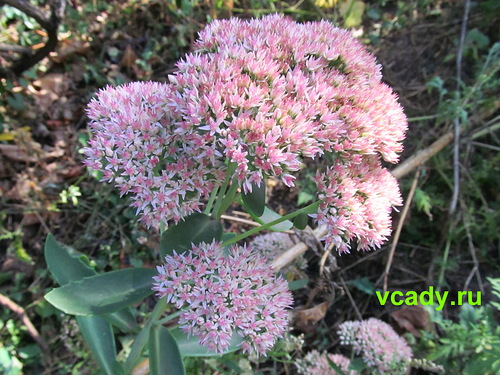 sedum
- one of the most unpretentious plants, numbering more than 500 species throughout the planet. Sedum is a succulent and requires almost no watering, and also tolerates heat well and is undemanding to soil.
sedum
- one of the most unpretentious plants, numbering more than 500 species throughout the planet. Sedum is a succulent and requires almost no watering, and also tolerates heat well and is undemanding to soil.
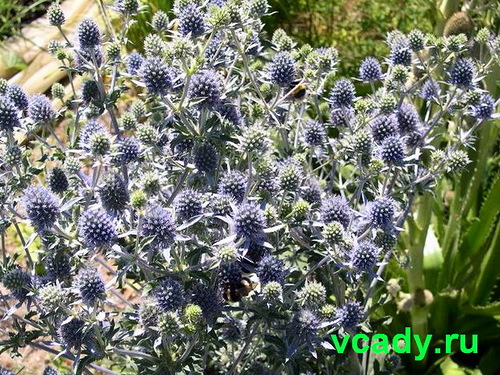 Feverweed
- a perennial, less often one- or two-year-old plant with leathery leaves ending in spines and small blue or blue flowers spherical shape. This plant is also distinguished by its exceptional heat and drought resistance and is not picky about soil.
Feverweed
- a perennial, less often one- or two-year-old plant with leathery leaves ending in spines and small blue or blue flowers spherical shape. This plant is also distinguished by its exceptional heat and drought resistance and is not picky about soil.
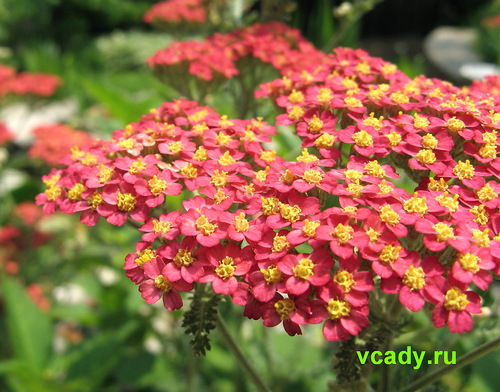 - mostly familiar to everyone as a wild medicinal plant, but several are used in gardening decorative species this flower. The plant is also not picky about growing conditions and soils and does not need frequent watering.
- mostly familiar to everyone as a wild medicinal plant, but several are used in gardening decorative species this flower. The plant is also not picky about growing conditions and soils and does not need frequent watering.
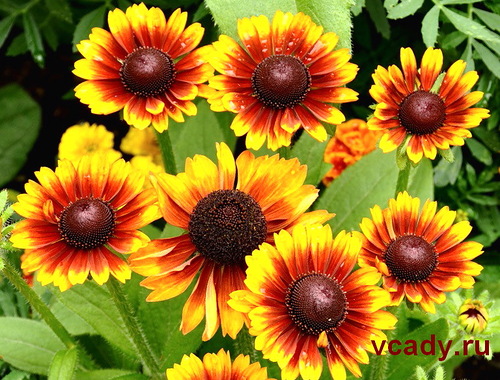 Gaillardia
- just as unpretentious perennial. Prefers dry, fertile, light soils, does not tolerate excess moisture and does not require special care.
Gaillardia
- just as unpretentious perennial. Prefers dry, fertile, light soils, does not tolerate excess moisture and does not require special care.
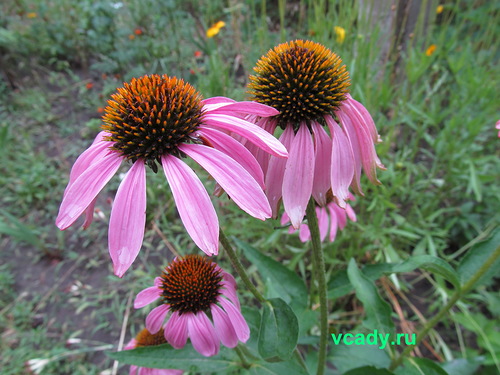 Echinacea
- a beautiful perennial plant that looks like a large chamomile. The plant has become widespread due to its unpretentiousness and high degree of adaptation. This flower can tolerate heat and drought quite easily.
Echinacea
- a beautiful perennial plant that looks like a large chamomile. The plant has become widespread due to its unpretentiousness and high degree of adaptation. This flower can tolerate heat and drought quite easily.
Well, now a little about unpretentious annuals. These plants have a longer flowering period, so they should not be overlooked either.
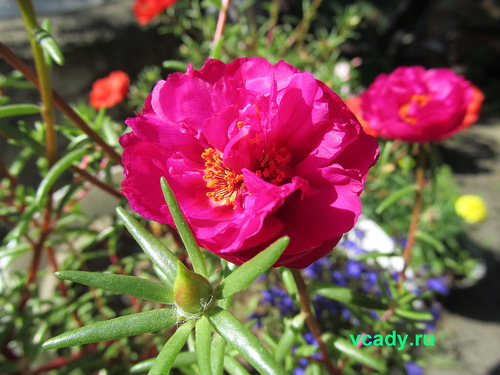 – grown as annual plant and belongs to succulents, blooms profusely from June until frost, grows quickly, forming a blooming “mat”. Purslane is unpretentious to soils, prefers sandy soil poor in fertilizers; adult plants can easily tolerate heat and grow excellently on dry soil.
– grown as annual plant and belongs to succulents, blooms profusely from June until frost, grows quickly, forming a blooming “mat”. Purslane is unpretentious to soils, prefers sandy soil poor in fertilizers; adult plants can easily tolerate heat and grow excellently on dry soil.
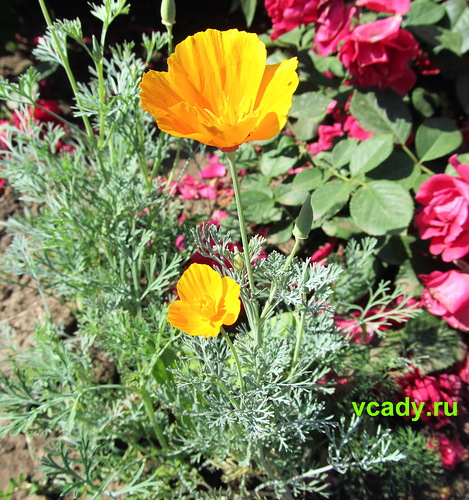
Having selected drought-resistant flowers for the flower bed on sunny area, residents of southern regions characterized by high summer temperatures and low precipitation can significantly reduce labor costs by reducing the number of waterings. Plants that easily tolerate drought are, as a rule, undemanding to the composition of the soil and do not need fertilizing. Such qualities will greatly facilitate the care of the flower garden.
Plant Features
Drought resistance in a number of plants is genetically determined: nature contributed to an increase in survival, which affected not only the cellular level, but also the appearance:
- the evaporating surface of the plant has decreased or the number of parts storing moisture has increased;
- a powerful and well-branched root system, going deep into the soil.
Not all of them are different lush flowering, but not all of them are similar to camel thorn either. Many plants that tolerate sun and infrequent watering are distinguished by their lushness and decorativeness despite the fact that they can survive drought. Their range is so wide that you can easily choose flowers for your flowerbed that satisfy the gardener in all respects.
Tall species
A flowerbed that combines different flowers, planted in tiers: tall ones are planted in the center of a round flower bed or in the background of a flower garden adjacent to the wall of a building. Of the tall plants in arid regions, the following are popular:
- 1 Karyopteris (nutwing) with early spring pleases with bright foliage, and in August and September it blooms blue fragrant inflorescences, similar to panicles, due to which English speaking countries he is called bluebeard. Varieties with blue and white flowers have been bred. The bushes of the plant are compact, do not fall apart, the height of the shoots is 0.5-1.5 m. With the onset of autumn, the foliage of the plant becomes especially decorative, changing color from green to various shades of brown, green and yellow.
- 2 Crocosmia (Montbrecia) is a bulbous iris plant native to South Africa. The smell of dried flowers is reminiscent of saffron. The height of the bushes, depending on the variety, is 0.6-1.5 m. Due to the abundance of varieties, it has an extended flowering period from June to the end of September; the flowers can be of various shades of yellow and red.
- 3 Mallow (mallow) is considered an annual weed, but is cultivated as decorative flower. This plant has 25 species, the same number of flower shapes, colors and sizes. In height (depending on the variety), mallow grows from 30 to 120 cm.
Medium height forms
This is the middle tier of the flowerbed, it is closer to the edge and therefore should be lower. There will be drought-resistant plants blooming against the backdrop of the “giants” of the previous tier:
- 1 Echinacea from the Asteraceae family pleases the eye with an abundance of colors - burgundy, yellow, pink and purple petals surround a convex center. Straight, rough stems reach a height of 1 m. This plant has a long (about 2 months) flowering period, starting in mid-summer.
- 2 Gaillardia (gaillardia) is an annual plant of the aster family, about half a meter high, with flowers ranging from yellow to red-brown in color, looks impressive against the background of the greenery of tall shrubs.
- 3 The bell (campanula) reaches half a meter in height. This herbaceous perennial plant blooms with purple, blue or white flowers.
- 4 Liatris is a corm plant that forms inflorescences with a total length of up to half a meter, blooming from top to bottom. Blooms from June to August.
- 5 Sandy immortelle (tsmin) is a perennial herbaceous plant of the Asteraceae family, up to 60 cm high. The flowers do not fade and do not lose color even after cutting.
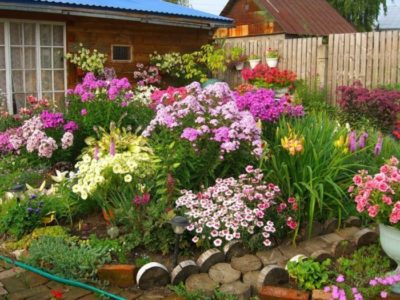
low growing flowers
The foreground of a flowerbed in a sunny area is made up of low representatives of drought-resistant flora:
- 1 Marigolds are often used in landscaping and offer a variety of varieties. The bushes are compact, the shortest ones are no higher than 20 cm. Not only are they decorative bright flowers with a strong odor, but also serrated leaves. They bloom from June until frost.
- 2 Phlox refers to perennials with erect or creeping stems. Although the flowers are not gigantic in size, the flowering is so abundant that the size of an individual flower does not matter. The color is varied - from pure white to dark purple. The appearance of the bushes is varied even within the species.
- 3 Calendula (marigold) is an ornamental herbaceous plant of the Asteraceae family and is also medicinal. If you promptly remove bright yellow or orange fading flowers, new ones will appear and bloom until the end of the growing season.
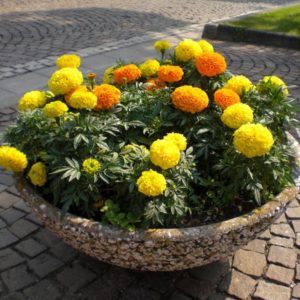
What are ground covers?
Look good on alpine slide located in the open sun:
- 1 Thyme (thyme, Bogorodskaya grass) - an essential oil plant, a low-growing shrub with branches up to 35 cm long, woody stems, recumbent or ascending. Blooms from June to August.
- 2 Juvenile () belongs to the Crassulaceae family. This is a perennial cover plant consisting of multi-leaved rosettes up to 15 cm in diameter. The fleshy leaves are not only decorative, but also serve as water reservoirs. They are grown not so much for their flowers, but for their decorative foliage.
- 3 Sedum (sedum) is another plant of the Crassulaceae family. Perennial, with fleshy leaves, star-shaped flowers bloom in summer or fall.
- 4 Saxifraga is able to grow even on rocks, this is an excellent indicator of its unpretentiousness. The low-growing plant blooms in spring or early summer. There are about 370 species in nature, and about 80 species are cultivated.
Only succulents can not be watered at all; all other flowers should still be given periodic watering days and loosening.
A little care - and a flowerbed made up of drought-resistant flowers will delight you with abundant blooms all season until late autumn.
And a little about secrets...
Have you ever experienced unbearable joint pain? And you know firsthand what it is:
- inability to move easily and comfortably;
- discomfort when going up and down stairs;
- unpleasant crunching, clicking not of your own accord;
- pain during or after exercise;
- inflammation in the joints and swelling;
- causeless and sometimes unbearable aching pain in the joints...
Now answer the question: are you satisfied with this? Can such pain be tolerated? How much money have you already wasted on ineffective treatment? That's right - it's time to end this! Do you agree? That is why we decided to publish an exclusive an interview with Professor Dikul, in which he revealed the secrets of getting rid of joint pain, arthritis and arthrosis.
Under the sun's rays, perennials bloom with special splendor and beauty. The choice of their species and varieties is large enough so that every gardener can find plants of the color, shape and flowering period that suit him.
The best places for many abundantly flowering garden perennials are open to the sun.
Here such noble long-flowered flowers as lilies, peonies and phlox can show themselves in all their glory. They tolerate short-term daytime shade quite calmly, but longer shading and even openwork shade from trees and shrubs seriously affect their prosperity.
Large, lushly flowering breeding varieties of sun-loving perennials are especially sensitive in this regard. For them, the most optimal are ridges with fertile and sufficiently moist soils.
The design of sunny areas depends entirely on your taste and, of course, on the actual capabilities of your garden. Small flower beds in the front garden can be designed no less impressively than a ridge stretched along a garden path, a “ribbon” of perennials along the border of the garden, or a flower island in the center of the lawn.
In any case, it is very important to skillfully combine plants according to their growth. Such tall and lush-flowering crops as rosemary, mallow and lupine are most advantageous in the “far” section of the flowerbed. Their flower stalks will rise above the shorter crops in the foreground, which in turn will cover the bases of their shoots.
To create a beautiful transition between a ridge open to the sun and a lawn, terrace or garden path Compact cushion-shaped perennials are very suitable - bush aster, blue carnation or Carpathian bell. They will reliably cover the soil with a dense leaf cover, which will decorate the edges of the ridges at the time when flowering ends.
The most important advantage of sun-loving perennials is their colorful outfit. Their multicolor arrangement looks best against a calm background of trees and shrubs.
To achieve certain color combinations, it is necessary to take into account the periodicity of development of each individual culture.
Peak flowering of perennials occurs from June to August. At this time, such large yellow-colored “sun worshipers” as rudbeckia, heliopsis, coreopsis, helenium, as well as juicy red monarda And Kniphofia.
Calm white and blue notes add to this color scheme different kinds and varieties of bluebell and spur (delphinium).
|
|
|
|
|
|
|
|
|
|
|
|
|
|
|
|
You can extend the flowering season in a sunny garden with the help of such attractive autumn-flowering crops as sedum, garden chrysanthemums or autumn asters.
Most perennials will bloom again in the fall if they are pruned in a timely manner after the main flowering period. Such plants include delphinium, stenactis, catnip And scabious.
The choice of spring sun-loving perennials is somewhat smaller. They bloom in April rezukha,meadow lumbago And Adonis. They are joined in May day-lily, catnip And peony.
You can enrich your spring palette with such bulbous plants as narcissus, tulip And grouse. Since bulbous crops become unattractive after flowering, they should not be planted in the foreground of garden beds.
An easier-to-maintain option for a large flower garden is a sunny lawn. Wild perennials - cornflower, yarrow, meadow sage- thrive here in motley company with herbaceous plants. Such lawns are sown with a special seed mixture or individual crops are planted on an existing lawn.
|
|
|
|
|
|
|
|
|
|
|
|
|
|
|
Flowerbed of sun-loving perennials
Soft and delicate colors dominate this perennial garden.
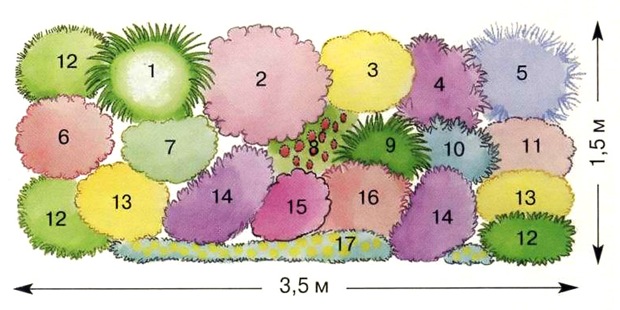
1. Miscanthus - Miscanthus sinensis.
2. Annual three-cut malope, or hole - Malope trifida.
3. Hybrid variety yarrow - Achillea "Schwefelbluete".
4. Campanula lactiflora.
5. Perovskia wormwood - Perovskia abrotanoides.
6. Annual hybrid of verbena - Verbena.
7. Sedum telephium (before flowering).
8. Decorative round-headed onion - Allium sphaerocephalon.
9. Foxtail pinnately - Pennisetum alopecuroides (before the appearance of flower stalks).
10. Louis's wormwood - Artemisia ludoviciana.
11. Hybrid variety of yarrow - Achillea "Lachsschoenheit".
12. Hybrid shrub aster - Aster dumosus (before flowering).
13. Hybrid coreopsis - Coreopsis.
14. Fassen's catnip - Nepeta fassenii "Six Hills Giant".
15. Himalayan geranium – Geranium himalayense.
16. Annual fragrant tobacco – Nicotiana.
17. Santolina chamaecyparissus.
Under the sun's rays, perennials bloom with special splendor and beauty.
The choice of their species and varieties is large enough so that every gardener can find plants of the color, shape and flowering period that suit him.
The best places for many abundantly flowering garden perennials are open to the sun.
Here such noble long-flowered flowers as lilies, peonies and phlox can show themselves in all their glory.
They tolerate short-term daytime shade quite calmly, but longer shading and even openwork shade from trees and shrubs seriously affect their prosperity.
Large, lushly flowering breeding varieties of sun-loving perennials are especially sensitive in this regard.
For them, the most optimal are ridges with fertile and sufficiently moist soils.
The design of sunny areas depends entirely on your taste and, of course, on the actual capabilities of your garden.
Small flower beds in the front garden can be designed no less impressively than a ridge stretched along a garden path, a “ribbon” of perennials along the border of the garden, or a flower island in the center of the lawn.
In any case, it is very important to skillfully combine plants according to their growth.
Such tall and lush flowering crops as red day, mallow and lupine, are most advantageous in the “far” section of the flowerbed. Their flower stalks will rise above the shorter crops in the foreground, which in turn will cover the bases of their shoots.
To create a beautiful transition between a ridge open to the sun and a lawn, terrace or garden path, compact cushion-shaped perennials are very suitable - bush aster, gray carnation or Carpathian bell.
They will reliably cover the soil with a dense leaf cover, which will decorate the edges of the ridges at the time when flowering ends.
The most important advantage of sun-loving perennials is their colorful outfit.
Their multicolor arrangement looks best against a calm background of trees and shrubs.
To achieve certain color combinations, it is necessary to take into account the periodicity of development of each individual crop.
Peak flowering of perennials occurs from June to August. At this time, such large yellow-colored “sun worshipers” as rudbeckia, heliopsis, coreopsis, helenium, as well as juicy red monarda and kniphofia.
Calm white and blue notes are added to this color scheme by various species and varieties. bell and spur (delphinium) .
|
|
|
|
|
|
|
|
|
|
|
|
|
|
|
|
You can extend the flowering season in a sunny garden with the help of such attractive autumn-flowering crops as sedum, garden chrysanthemums or autumn asters .
Most perennials will bloom again in the fall if they are pruned in a timely manner after the main flowering period.
Such plants include delphinium, stenactis, catnip iscabiosis.
The choice of spring sun-loving perennials is somewhat smaller.
They bloom in April rezukha, meadow lumbago and adonis.
They are joined in May daylily, catnip and peony.
You can enrich your spring palette with such bulbous plants as daffodil, tulip and hazel grouse.
Since bulbous crops become unattractive after flowering, they should not be planted in the foreground of garden beds.
An easier-to-maintain option for a large flower garden is a sunny lawn.
Wild perennials - nivberry, yarrow, meadow sage - thrive here in colorful company with herbaceous plants.
Such lawns are sown with a special seed mixture or individual crops are planted on an existing lawn.
|
|
|
|
|
|
|
|
|
|
|
|
|
|
|
Flowerbed of sun-loving perennials
Soft and delicate colors dominate this perennial garden.

1. Miscanthus - Miscanthus sinensis.
2. Annual three-cut malope, or hole - Malope trifida.
3. Hybrid yarrow variety - Achillea "Schwefelbluete".
4. Campanula lactiflora.
5. Perovskia wormwood - Perovskia abrotanoides.
6. Annual hybrid of verbena - Verbena.
7. Sedum telephium (before flowering).
8. Decorative round-headed onion - Allium sphaerocephalon.
9. Foxtail pinnately - Pennisetum alopecuroides (before the appearance of flower stalks).
10. Louis's wormwood - Artemisia ludoviciana.
11. Hybrid variety of yarrow - Achillea "Lachsschoenheit".
12. Hybrid shrub aster - Aster dumosus (before flowering).
13. Hybrid coreopsis - Coreopsis.
14. Fassen's catnip - Nepeta fassenii "Six Hills Giant".
15. Himalayan geranium - Geranium himalayense.
16. Annual fragrant tobacco - Nicotiana.
17. Santolina chamaecyparissus.
Examples of compositions from sun-loving perennials
|
Cascades of flowers Thanks to well-thought-out planting, geranium, sedum and mantle get the same amount of sunlight, as does the tall wood mallow (Malva sylvestris) in the background. |
Warm colors of autumn The delicate and soft palette of Echinacea purpurea, Helenium and Aster amellus hybrids is simply delightful! |
Daylily (Hemerocallis), gaillardia (Gaillardia) and loosestrife (Lysimachia punctata) simply glow in the sun. |
Beautiful sun-loving perennials
Delphinium - large-flowered perennial with long candle-shaped inflorescences; supports are desirable; re-blooming after pruning. The erect peduncles of spurs, densely strewn with bells, are spectacular in any corner of the garden.
Phlox paniculata - long-lasting large-flowered perennial with dense pin-shaped peduncles; re-blooming after pruning. A pleasant aroma and lush floral appearance make phlox one of the most popular garden crops.
- an unpretentious large-flowered perennial with basket-shaped inflorescences; produces root suckers; pruning increases the flowering period. If you provide rudbeckia with enough space, it will gradually form dense flower thickets.
- an abundance of star-shaped inflorescences above dense dark green foliage; good ground cover plant. Warm lights autumn aster bush (Aster dumosus) glow in the garden until October.
Catnip - long, arched shoots with numerous small two-lipped flowers; loose bushy growth. It is not difficult for him to find company. Regular pruning maintains the compact shape of the bush.
Oriental poppy (Turkish) - large cup-shaped flowers of luminous color; short flowering time; spreads by self-seeding. It is loved for the freshness of its bright flowers and the expressiveness of its seed pods.
- A hardy, large-flowered perennial with sunflower-like inflorescences on long, straight stems and long-lasting flowers.
Lavender - a compact, long-lived perennial with evergreen pubescent foliage and fragrant flowers. Thanks to its woody stems, lavender is classified as a subshrub. She is very good in borders.
Day-lily - large-flowered perennial with star-shaped or bell-shaped flowers; grows to the size of a large bush.
Gaillardia - attractive multi-colored ray-shaped inflorescences on strong stems; Protection from cold weather is recommended.

